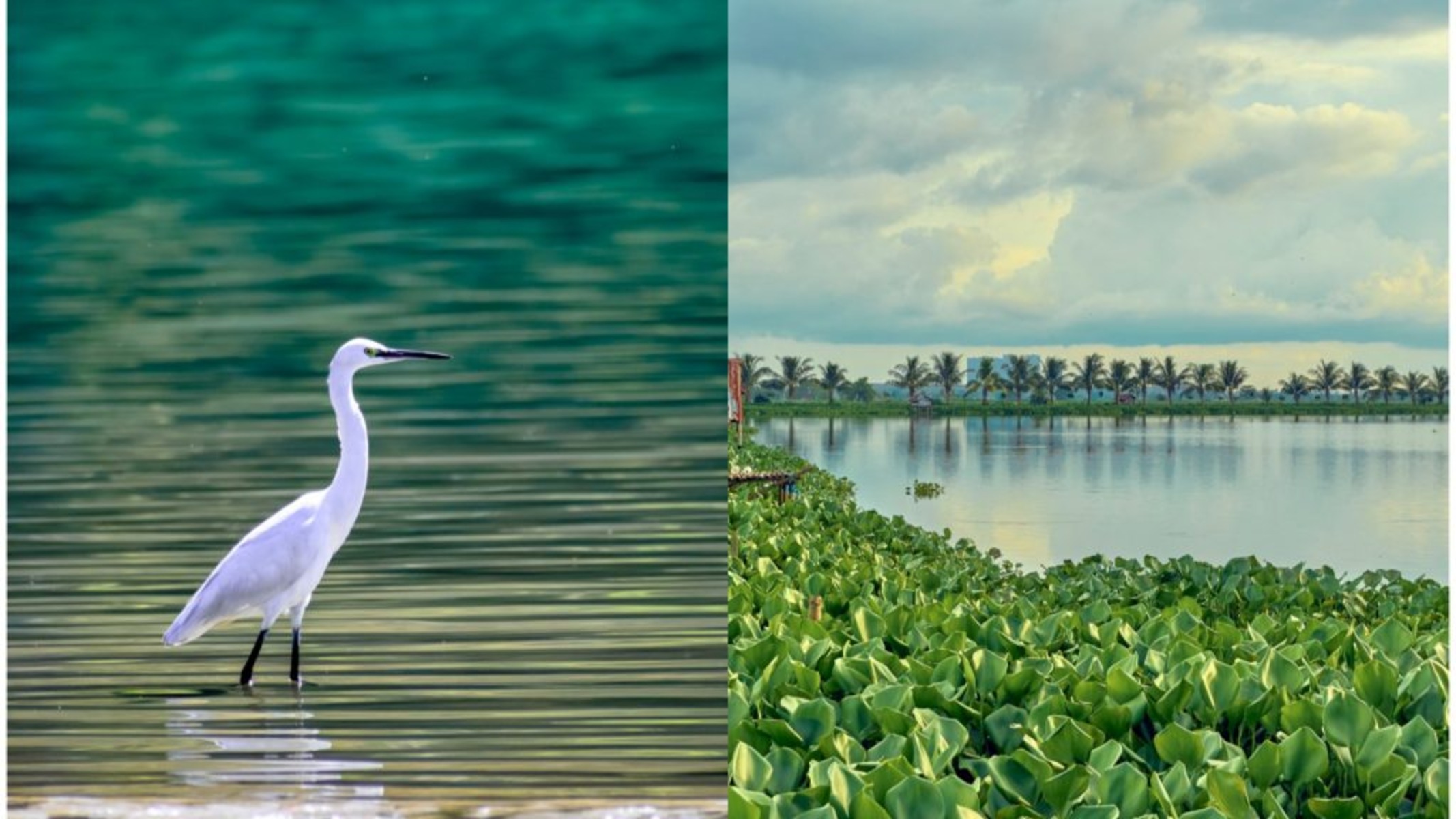Conservation, Environmental Pollution and Degradation, Environmental Impact Assessment.
In News:India adds 3 new Ramsar sites: What are wetlands, why do they matter for the environment?
Elaborate on the importance of wetlands in India. Discuss briefly the threats to wetlands and the initiatives offered by our government for this purpose.
According to the Ramsar convention, wetlands are defined as “areas of marsh, fen, peatland or water, whether natural or artificial, permanent or temporary, with water that is static or flowing, fresh, brackish or salt, including areas of marine water the depth of which at low tide does not exceed six metres”.
In India, according to the National Wetland Inventory and Assessment , wetlands constitute 4.63 percent of the total geographical area of the country.
Importance of wetlands:
- Protect the environment from floods and storms by absorbing the excess rainfall and serving as a buffer against the impact of extreme weather events.Sundarbans which houses many wetlands-absorbed excess water during cyclones and floods, protecting coastal communities in West Bengal and Bangladesh.
- Wetlands help regulate climate conditions through carbon sequestration.
- Wetlands in India act as foraging and resting grounds for migratory birds during winter. Most Indian Ramsar Sites lie on the Central Asian Flyway for migratory avian species like the bar-headed goose, black-necked crane.
- According to the US Environmental Protection Agency, wetlands are among the most productive ecosystems in the world. It is a home to many globally endangered species.
- They contribute to the locals’ livelihood through fishing.They also provide irrigation water to farmlands, drinking water to local communities.Example: Tawa wetland
- They help in storing water, and groundwater recharge, helping maintain the region’s water table.Example: Kazhuveli wetland
Threats to wetlands:
- Unsustainable development: According to Global Wetland Outlook (2018), 35% of global wetlands were lost between 1970 and 2015, due to human activities to provide land for housing, industry and agriculture;Example maradu construction in kerala
- Pollution: around 80% of global wastewater is released into wetlands untreated, with pollution from factories, fertilisers, pesticides and major spills posing serious threats to the ecosystem; industrial effluents from textile and tannery industries polluted wetlands in Kanpur and Kolkata.
- Invasive species: wetlands are particularly vulnerable to invasive species, and are often introduced by humans.It can alter the physical structure of wetlands, leading to habitat loss for native species.
- Over-exploitation of resources: Overfishing, excessive harvesting of aquatic plants, and unsustainable use of wetland resources can have negative impacts on wetland ecosystems.
- Climate change: changes in rainfall patterns and temperature pose an existential threat to wetlands, and the flora and fauna that inhabit them.
The Indian government has launched a series of policies and initiatives to protect wetlands.
- National Wetlands Conservation Programme (NWCP): it identifies and designates wetlands of national importance for conservation. It provides financial assistance to state governments and local communities for wetland conservation activities.
- India is a signatory to the Ramsar Convention, an international treaty that aims to protect wetlands. The government has designated several wetlands as Ramsar sites, providing them with special protection and conservation measures.
- The Amrit Dharohar Scheme launched in 2023 aims to promote the use of wetlands over the next three years.
- Wetlands (Conservation and Management) Rules: Provides a legal framework for the protection and sustainable management of wetlands.
- Wetlands Rejuvenation Programme: Employs a multifaceted approach including baseline information development, rapid assessment through wetland health cards, stakeholder platforms, and comprehensive management planning.
- Community-Based Wetland Management: The government encourages community participation in wetland management through programs like the Joint Forest Management (JFM) scheme.
- Awareness and Education: The government conducts awareness campaigns and educational programs to promote wetland conservation and educate the public about the importance of wetlands.Example: ‘Save Wetlands Campaign (SWC)’ launched by MoEF&CC on the occasion of World Wetlands Day (WWD) 2023
Despite these efforts, wetlands in India continue to face significant challenges. Effective wetland conservation requires a multi-faceted approach that involves government action, community participation, and public awareness.
| PYQ: Comment on the National Wetland Conservation Programme initiated by the Government of India and name a few India’s wetlands of international importance included in the Ramsar Sites. 2023What is wetland? Explain the Ramsar concept of ‘wise use’ in the context of wetland conservation. Cite two examples of Ramsar sites from India. 2018 |

